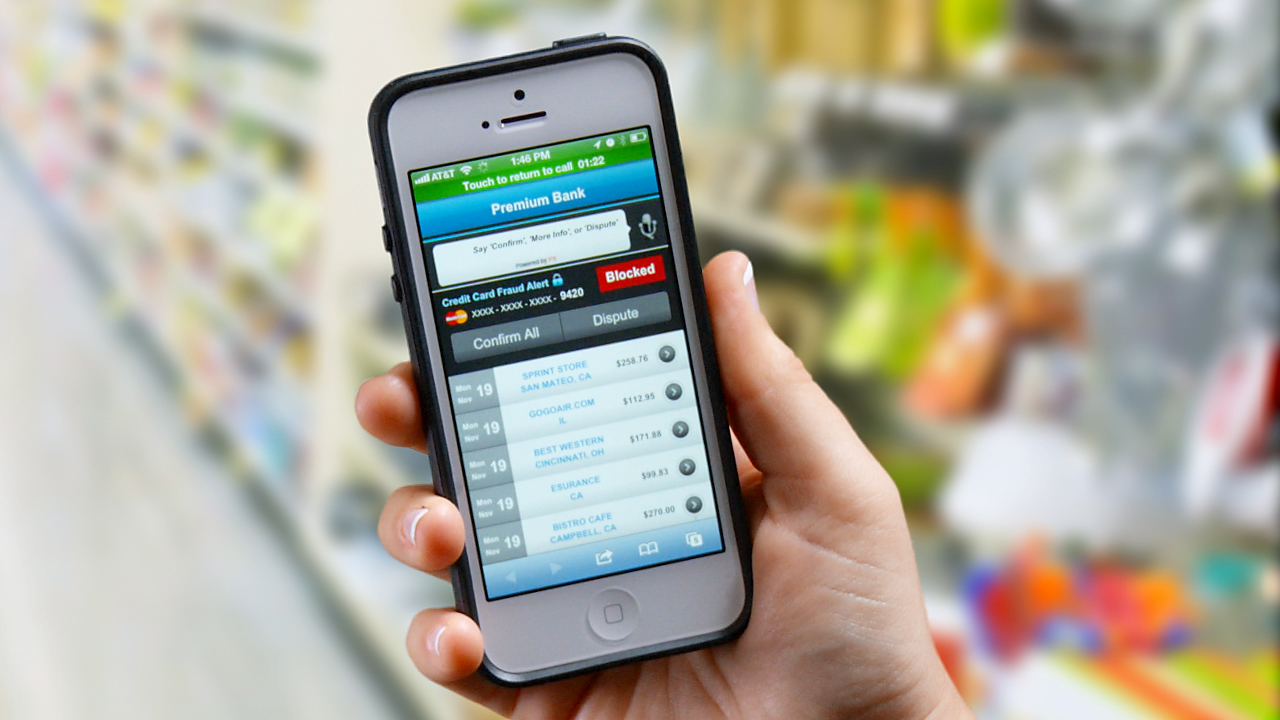What do you think about when you hear the words interactive voice response (IVR)? There has been a longstanding – and quite frankly, misrepresenting – outlook on this technology (ie. that it is archaic, unneeded and decreases customer retention). But what if you could transform your existing IVR into a next-generation mobile customer experience? Seeing how by the end of this year, it is being projected that there will be more smartphones than human beings in the world, this doesn’t sound like too shabby of a suggestion, huh?
Well now, intuitive customer experience expert [24]7 has just today revealed its revolutionary answer to bridging the gap between IVR and mobility with [24]7 Visual Speech. It cannot be disputed that currently, mobility is completely pervasive in consumers’ lives and the technological landscape as a whole. In order to keep up with the strong current of consumer demand, companies need to elevate their offerings to stay ahead of today’s quickly evolving pace – otherwise, they’ll just get carried away.
While IVR is essential for such things as its predictive analytics and ability to provide real-time, actionable insight to improve the customer experience, there seems to be an untapped area for growth that [24]7 had no problem quickly filling to meet these growing customer needs.
Simply put, [24]7 Visual Speech delivers a unified customer experience across IVR and mobile (across a multitude of channels including Web, chat and social) without losing the customer’s context, a statement released explains.
Call centers aren’t going anywhere anytime soon. They continue to remain one of the most dominant and widely-used forms of customer to company contact today and as such, IVR will be staying put as well. It almost goes without saying that a very wide slice of the customer pie still prefers to use voice, and this is where [24]7 Visual Speech comes into play (and hey, even if they don’t, the company’s got you covered).

Image via [24]7
In light of this, I was able to speak with Daniel Hong, senior director of Product Marketing Strategy at [24]7 on how this solution so easily differentiates itself in today’s ultra-competitive market.
“This multimodal solution gives consumers a way to move from IVR phone interactions to the mobile Web using their smartphones, making complex and information-rich tasks easier,” Hong explained. “Driving results with prediction, initial results show adoption rates for the [24]7 Visual Speech are greater than 80 percent, with over 90 percent task completion success rates. All in all, we’re very excited about [24]7 Visual Speech.”
So how does this solution work? [24]7 Visual Speech provides consumers using IVR systems with an advanced HTML5 mobile Web experience without requiring them to download a mobile application. The IVR then works to guide the consumer to a successful transaction by bridging to the mobile Web. Embracing mobile self-service can easily and efficiently translate to higher adoption of the mobile app, greater self-service automation, and ultimately, an overall more engaging customer experience, the company reasons.
What’s best about this development is that accessing and the mobile app does not require a download. Sure, while the statistics show that the number of installed apps on the average smartphone has risen from 32 in 2011 to 41 in 2012, that doesn’t necessarily mean that they are being used. Needless to say, this doesn’t speak too well on the usage rates of downloaded apps.
“Consumers typically have a hard time using an IVR and eventually end up pushing the zero button on their phones right away,” PV Kannan, founder and CEO, [24]7 elaborated in said statement released today. “At [24]7, through in-depth research we developed a way to enhance the IVR experience through the use of the smartphone. We use the smartphone for what it does best, to show a large amount of information on the visual screen. In addition, consumers don’t have to download an enterprise app. Consumers really value the ease, the speed, and the innovation of [24]7 Visual Speech.”
As a whole, consumers want to feel productive and wise in their investments; when you have to download an app for use that is vital but not frequent, there’s a conflicting sense of whether it’s even worth the download, which could just be thrown into the pile of accumulating downloaded mobile applications.
Conversely, [24]7 takes the complexities out of this scenario by making its app openly available to you when and where you need it without any downloading necessary. In doing so, the company seems to have really established a unique understanding of what the customer wants based on their preferences, intent and overall mobile journey.
“Our mission is very simple,” Hong concludes, “to make it simple for consumers to connect to companies. And how do we do that? We do that by making customer service available and simple.”
With the [24]7 Visual Speech, the company seems to have – once again – hit the nail right on the head in achieving this objective.
Want to check out more statistics on mobile phone and app usage? Check out this infographic from Go-Gulf.com to learn more.
 Internet Telephony Magazine
Click here to read latest issue
Internet Telephony Magazine
Click here to read latest issue CUSTOMER
CUSTOMER  Cloud Computing Magazine
Click here to read latest issue
Cloud Computing Magazine
Click here to read latest issue IoT EVOLUTION MAGAZINE
IoT EVOLUTION MAGAZINE




